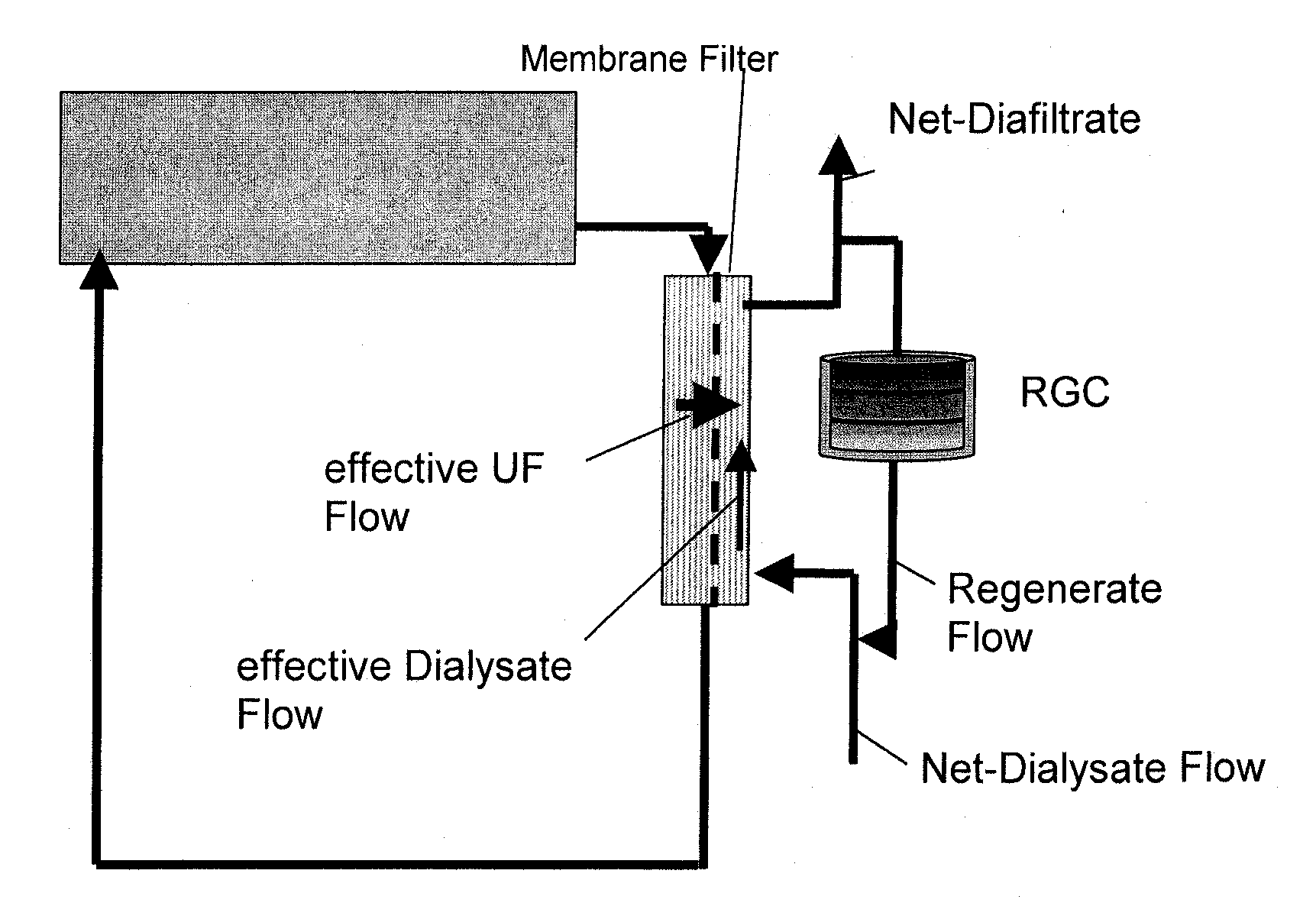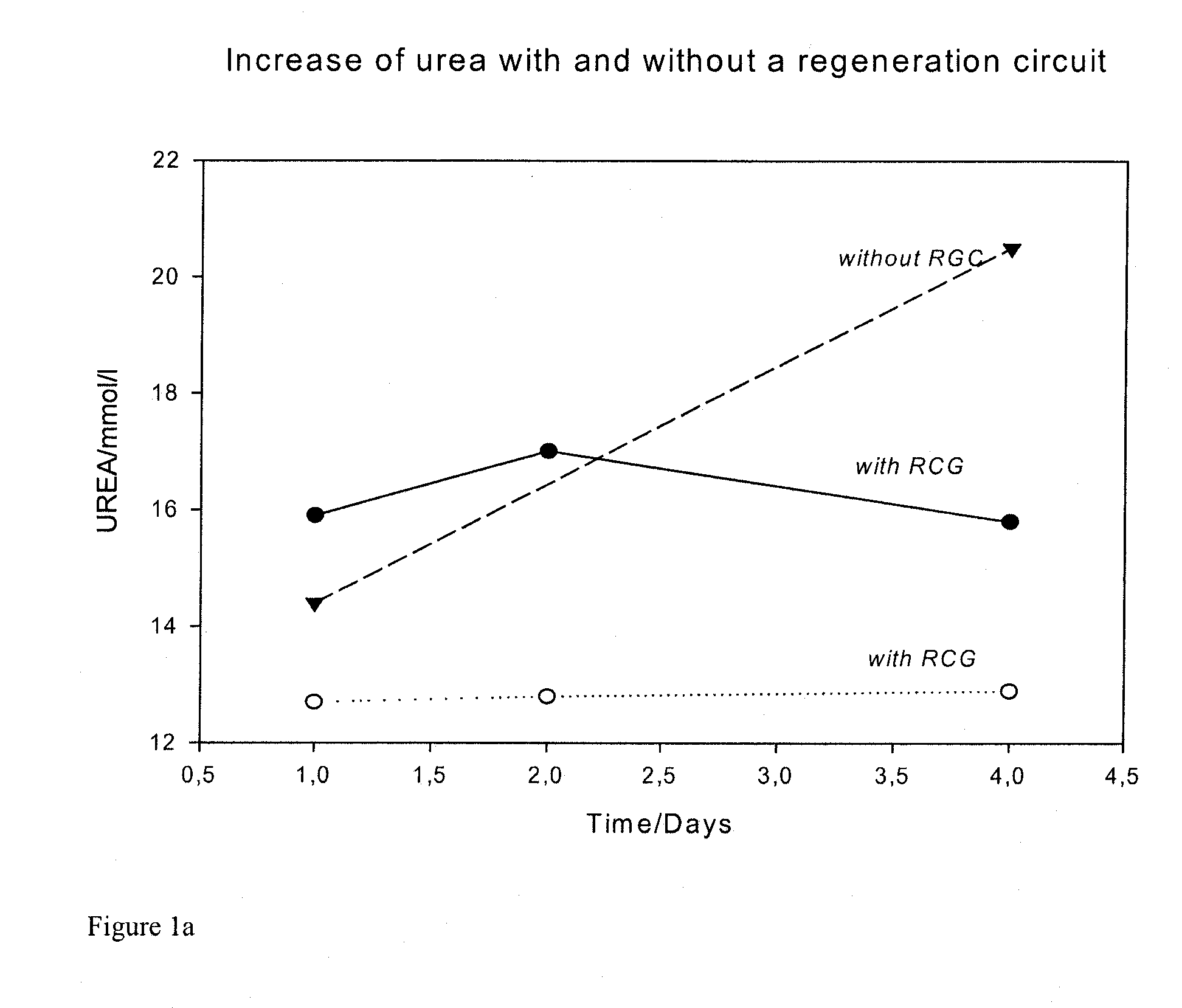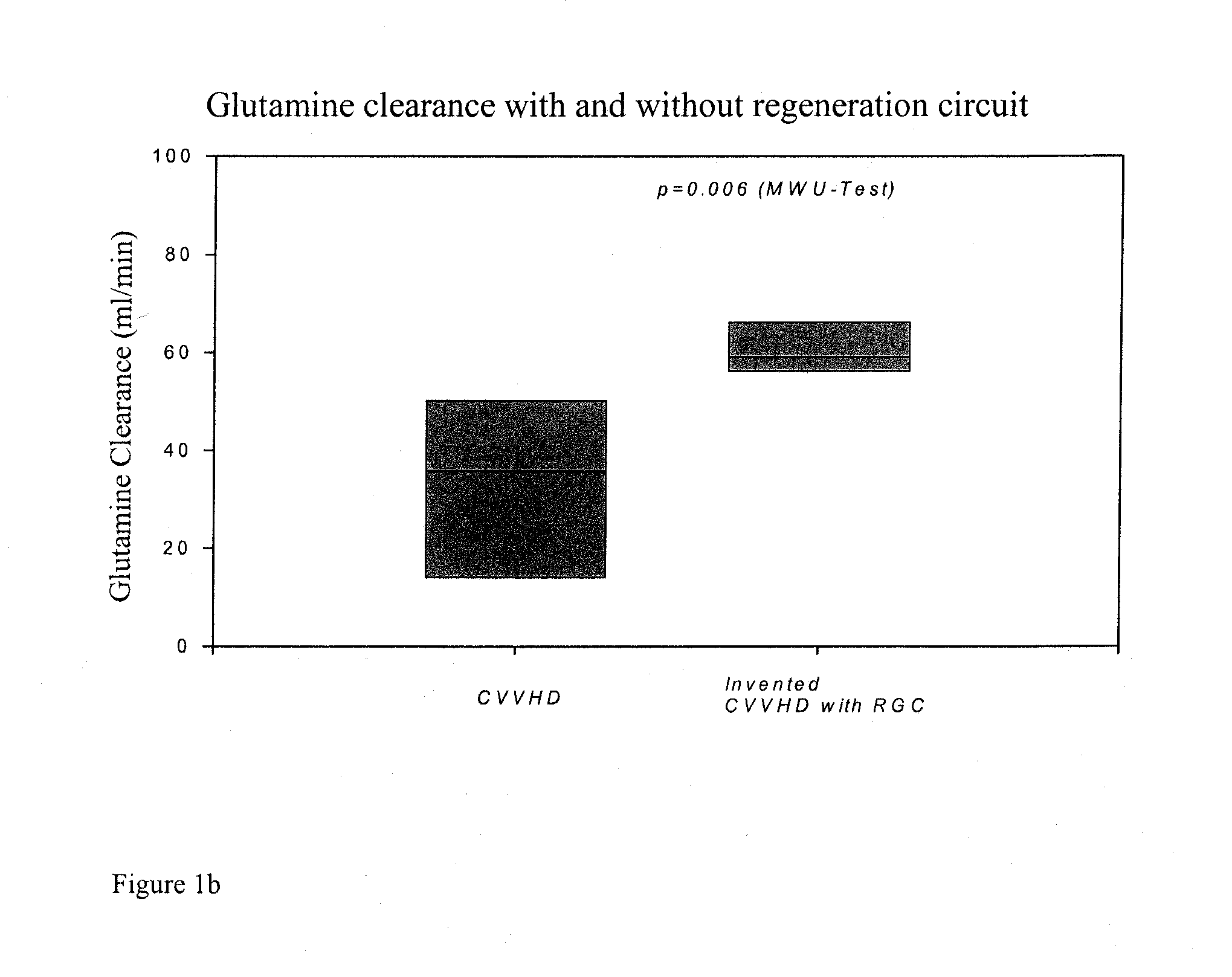Method and apparatus for limiting diafiltrate waste
- Summary
- Abstract
- Description
- Claims
- Application Information
AI Technical Summary
Benefits of technology
Problems solved by technology
Method used
Image
Examples
example 1
Urea as Substance X; Glutamine and / or Ammonia as Substance Y
[0048]FIG. 3 depicts a flow diagram for a process for carrying out the present invention. The process employs an activated carbon adsorber not having adsorption capacity for urea. A portion of the sterile bicarbonate dialysis fluid (flow 150 ml / min) is recycled during a CVVHD treatment mode with slow blood flow (150 ml / min)), and moderate net diafiltrate flow (50 ml / min)) and thus lower urea clearance (50 ml / min) based on dialyzer blood and dialysis flow. Despite the short treatment time (a).
[0049]Potential co-variates of urea kinetic, such as endogenous formation by catabolism or renal urea clearance as the cause for this surprising observation were also comparable and could be ruled out.
[0050]In a more detailed investigation of the phenomenon it was found that the internal recycling of the sterile bicarbonate dialysis solution did not lead to direct removal of urea as a target substance, as the activated carbon used in th...
example 2
Ammonia as Substance X; Glutamine as Substance Y
[0053]According to the state of the art, ammonia is effectively removed from complex biological compartments by dialysis when it is set at minimum flow of about 200 ml / min and a dialysate flow of over 500 ml / min at a membrane surface area of 1.3 m (Cordoba et al. 1996).
[0054]It has been shown that by using an internal regeneration cycle (RCG) based on activated carbon, an effective decrease of the ammonia occurs, even at considerably lower net flow rate of the dialysate, below 500 ml / min from complex biological systems, which is based on a selective elimination of glutamine related to glutamate concentrations. This again can increase the glutamate / glutamine ratio which is a therapeutic goal.
[0055]This was carried out in an in vitro set up completing the following experiments:
[0056]Following the model described by Cordoba for building complex biological fluid compartments, a patient model was established by treating each with one liter ...
example 3
Substance X: Nitric Oxide: Substance Y: Arginine
[0061]Nitric oxide is a short-lived radical which is not considered to be removable by extracorporeal therapies.
[0062]Including a regeneration circuit (RCG) according to the invention in a CVVHD device which allows improved depletion of arginine by microstructured adsorbents enables control of plasmatic NO levels in plasma.
[0063]A CVVHD therapy device with an effective blood flow of 120 ml / min and a dialysate flow of 40 ml / min was equipped according to the invention with a regeneration circuit (RGC) of 100 ml / min with a microstructured charcoal adsorbent (perfusion channel with at maximum 100 μm). For control, a comparable CVVHD was done without RGC.
[0064]With RGC included, the nitrate / nitrite level as an indicator for NO in plasma was decreased from 112 to 26 μmol / l within 24 hours, and from 108 to 24 μmol / l in 16 h. With standard CVVH, the NO level increased from 24 to 125 μmol / l within 48 hours. While the dialysis of NO itself is no...
PUM
 Login to View More
Login to View More Abstract
Description
Claims
Application Information
 Login to View More
Login to View More - R&D
- Intellectual Property
- Life Sciences
- Materials
- Tech Scout
- Unparalleled Data Quality
- Higher Quality Content
- 60% Fewer Hallucinations
Browse by: Latest US Patents, China's latest patents, Technical Efficacy Thesaurus, Application Domain, Technology Topic, Popular Technical Reports.
© 2025 PatSnap. All rights reserved.Legal|Privacy policy|Modern Slavery Act Transparency Statement|Sitemap|About US| Contact US: help@patsnap.com



